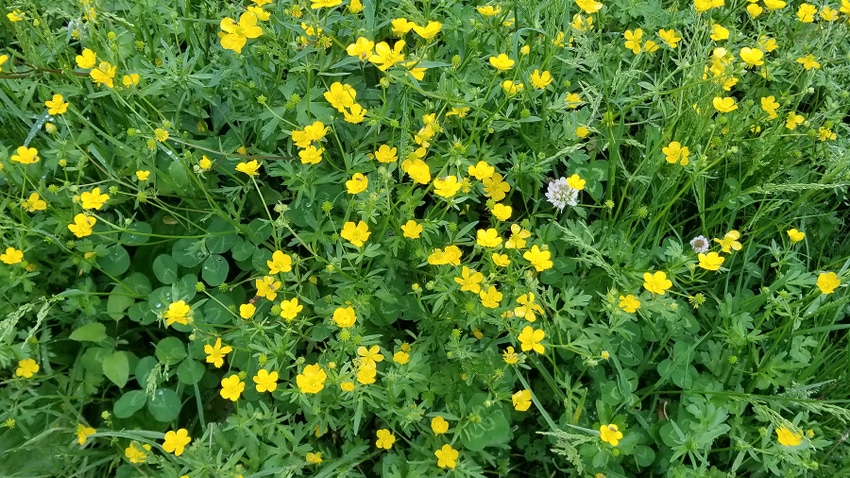May 17, 2023

by Victor Shelton
The yellow-flowered plant that suddenly invaded pastures this spring is buttercup, and it’s not pretty.
Buttercup is toxic to all species of livestock. Animals that consume buttercup may suffer from mouth blisters, diarrhea, colic and possibly death. Luckily, most livestock will not eat buttercup because it is unpalatable. The toxin is not a concern in hay. However, seeds from maturing plants could move to new locations via hay.
Cattle only eat buttercup if nothing else is present. Horses avoid it. Sheep don’t typically eat buttercup, but are more likely to graze very immature plants than most animals. They tend to experience mouth blistering as a symptom.
Why buttercup appears
Buttercup most often sneaks into pastures through purchased hay, poorly cleaned seed or hay equipment. It may lay incognito for several years in the understory of forage, slowly increasing its seed bank and waiting for an opportunity to fully show its true colors.
That opportunity usually starts with overgrazed fall pastures with at least some soil disturbance. This not only sets back desirable forage species, but also provides small, bare soil spots that enable buttercup to take off. Wet soils with some compaction and bare areas create ideal conditions.
When undesirable plants like buttercup are avoided by animals and desirable species are grazed tighter than they should be, undesirable species get a continually stronger foothold. In horse pastures, for example, horses will totally avoid buttercup, picking around it and eating desirable species into the dirt. Under these circumstances, a field where buttercup was barely visible one year can be solid yellow flowers in a year or two.
Controlling buttercup
Here are tips for managing buttercup:
Keep it out. Try not to bring buttercup onto the farm in the first place. Check and maintain good soil fertility to encourage good growth of desirable species. Don’t overgraze, especially in the fall, because that weakens competition from desirable species. Most buttercup plants develop from seed during the fall if enough moisture is present. Overgrazing fields creates opportunities for buttercup to grow. Maintaining cover is one of the best methods to compete against this weed.
Don’t let it go to seed. Mowing directly after grazing can help level the playing field a little bit, setting the plant back to a more vegetative state. The buttercup plant can set seed close to the ground if forced to do so, but at least less seed is produced.
Use longer rest periods. These create more competition from desirable species. Once the threshold has been reached, the infestation must be controlled by chemical means.
Properly use herbicides. Ideally, apply herbicides in the early spring before flowering. Fall applications can be very advantageous, especially with proper grazing management and good soil fertility programs.
Unfortunately, unintended consequences of herbicide treatments can be detrimental to desirable forbs and legumes. Some desirable species may return from the seed bank, but you may also need to reseed. Contact your local Extension office for herbicide choices. Follow label instructions and restrictions.
Shelton is retired as state agronomist and grazing specialist with the Natural Resources Conservation Service in Indiana. He writes from Washington, Ind.
You May Also Like




